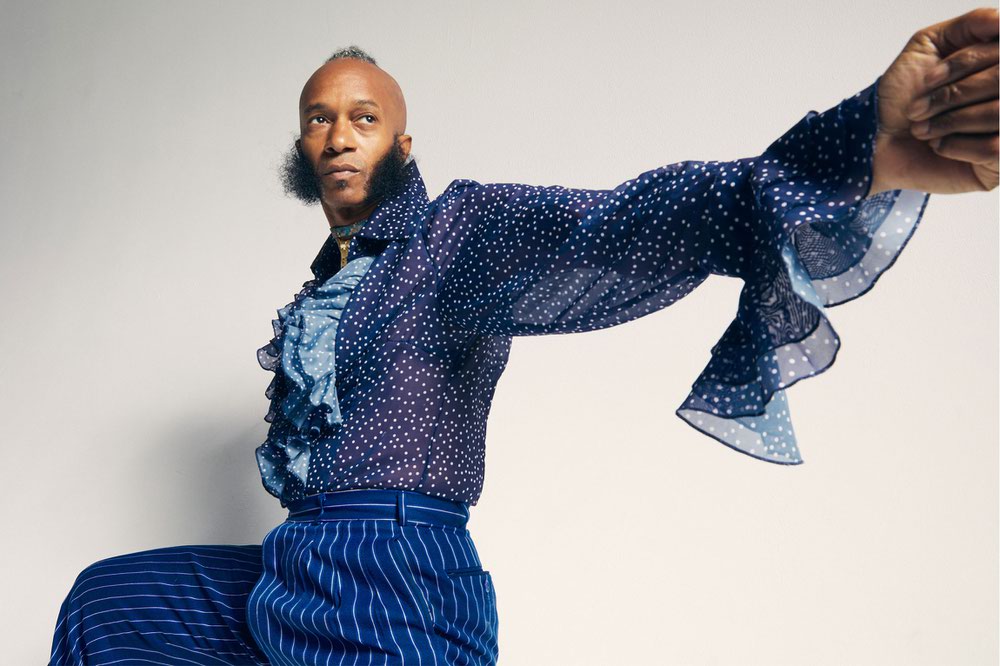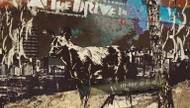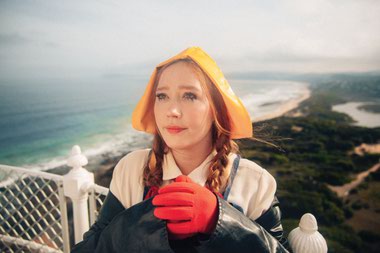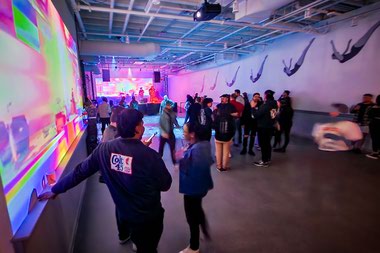Fantastic Negrito doesn’t mince words, and perhaps it’s that unbridled honesty that makes the Bay Area bluesman so refreshing.
“I don’t ever make or create music to think about who’s going to like it. I could not really care less,” he tells the Weekly. “I cared when I was younger. Now I just create, and whoever’s ready to hear the message, then that’s when they’re ready. You can’t really think about when people will catch up.”
The Grammy-award winning singer, born Xavier Dphrepaulezz, has kept that sentiment alive throughout his career—at first under the mononym Xavier, then briefly as the blue-haired frontman of Blood Sugar X, a punky blues outfit resonant of the band Fishbone. In recent years, the 54-year-old has reinvented himself again as Fantastic Negrito, building off the bedrock of blues, folk, R&B, soul and funk to tell new stories.
On his fourth Fantastic Negrito release, June’s White Jesus Black Problems, he unearths the story of his seventh-generation great-grandparents and their forbidden, interracial romance during the 17th century. It’s a tale that still rattles him, he says, especially because Dphrepaulezz only discovered it after receiving an email from a distant relative about his ancestral ties.
As a musician, Fantastic Negrito sets the pace for innovation. He’ll share a bill with several other influential musicians at an August 13 One Nation Under a Groove tour stop at the Amp at Craig Ranch—legendary conductors of funk George Clinton & Parliament Funkadelic, jazz-funk veterans Karl Denson’s Tiny Universe and aforementioned ska-punk-metal band Fishbone.
The concept of White Jesus Black Problems is incredibly visceral. How has it been translating that level of storytelling to a live setting? This was not the album I intended to make. It was pre-pandemic, and I thought my fourth album should be a collaborative effort with myself and some of the artists that I admired as a teenager. The first person I sat down with was Sting, and we recorded something really cool in West Oakland. I was going to see him the next day, and then the pandemic happened. Then I had to retreat for a year and figure out what I was going to do, like everybody else. I did a television show called Black Lightning in Atlanta during the pandemic, and that’s how I discovered this story by mistake. I was just answering an inbox email, and the day I entered that inbox in Atlanta, my life changed.
As far as translation, it’s been good because being the eighth of 14 kids, I’m a pretty good storyteller. It’s extremely unique, the story, but there’s a common bond. It’s a lot about perseverance; it’s a lot about using the challenges as our inspiration, using the obstacles as fuel and overcoming difficult situations. I think that’s universal throughout the world. Whether I’ve been in Athens, Spain or the U.K., it just translates.
Walk us through your initial phase of discovery. The thing that was astonishing is that when I got to my third generation of grandparents on my mother’s maternal side, I discovered that they were free. And that’s what made me dig. I was like, Wow, you’re free? In the middle of slavery in Virginia? I discovered that not only were they free, but there were about 50,000 African-Americans that were free in the 1700s in Virginia. … When I got to the seventh generation, that’s when my mind got blown. I memorized: “Elizabeth Gallamore, presented in the Amelia County Court, Virginia, for unlawfully cohabitating with a negro slave, belonging to Henry Jones, and having several malatto children.” I think I had to read that about 20 times to really understand. …
She chose to love and start a family with an enslaved man. I thought, Wow. Grandpa must have been quite a man. Making a choice like that? A white woman in the 1750s? Sh*t, you must’ve been out of your mind. But it did help me explain a lot about myself, and why I make the choices I make. I came from some very revolutionary people, a very punk-rock aesthetic. We can, we must, we will do what we believe in. Not what you tell us.
Why did you feel this story needed to be shared? Who needed to hear it most? I felt like my past generations’ ancestors were tapping me on the shoulder, saying, please tell our story, because everyone needs to hear it now, because we’re so entrenched in our ideology. It just feels like on the left and on the right, if you say the wrong thing, then people accuse you. It’s a very accusatory, witch-hunt atmosphere. You better not say the wrong thing. You better not disagree with this. It’s maddening right now.
This story was about two people who are extremely different, from different ends of the spectrum, that actually got something done. That’s what really intrigued me. She’s an indentured servant, he is a slave, and you know what? They actually got something done; they had children together. And I’m here. …
What about us getting something done? We can’t get anything done. We have our signs, we have our slogans, we march and we got our hats, but what are we really getting done?
Your music video for “Highest Bidder” features face-painted Africans, colonial men, doctors engaged in a frenzied dance for the American dollar. What drove you to paint that kind of picture? I had to start off with that, because that’s the story we needed to focus on, that this thing is very much driven economically. We’re obsessed with race in this country, and we’re obsessed with class [and] with sex. But I think the thing is, it’s really the money. These people did all of this stuff because they wanted money. …
I shot this with one camera. I had no idea what I was doing when I made this. It was extremely organic, and I just let it happen. It felt like a speeding train. It took me where it was gonna take me, and it wasn’t really my story.
I met Quincy Jones once, and we were talking about the process. He was saying, like, stay out of the way. I think that’s what happened on this particular project. I was letting it take me wherever it wanted to go, because every song represented a chapter in the story of my grandparents. And [the album] title just came to me in Atlanta. Like, boom, White Jesus Black Problems. ...
I know some people haven’t been a fan of that title. But if I wanted to be safe, I would have worked at Starbucks. I want to be an artist, I want to get your attention and I want to tell you something. I have something to say with my music.
Which artists in mainstream music today are saying something worthwhile? It’s probably too easy to say Kendrick Lamar, but I feel he’s just been brilliant. … I like what he represents and what he stands for. I like Sturgill Simpson, because I think he’s kind of a rebel cowboy. I’m also really impressed with Tank and the Bangas. I’ve worked with her, and I think she’s a phenomenal talent.
What can we expect from your show at the Amp? My show is like church without the religion. I bring it like that. It’s very high charged. You said the word visceral earlier. It’s visceral, organic. I try to really interact with the people in the audience all across the world, all differently. It’s something to look forward to.
ONE NATION UNDER A GROOVE TOUR Ft. George Clinton & Parliament Funkadelic, Karl Denson’s Tiny Universe, Fishbone, Fantastic Negrito, Blu Eye Extinction. August 13, 4:30 p.m., $55-$125. The Amp at Craig Ranch Park, jabment.com.
Click HERE to subscribe for free to the Weekly Fix, the digital edition of Las Vegas Weekly! Stay up to date with the latest on Las Vegas concerts, shows, restaurants, bars and more, sent directly to your inbox!








